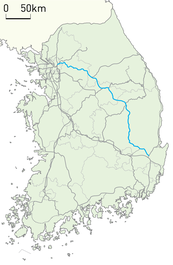
Jungang line
| Jungang line | |||||||||||||||||||||||||||||||||||||||||||||||||||||||||||||||||||||||||||||||||||||||||||||||||||||||||||||||||||||||||||||||||||||||||||||||||||||||||||||||||||||||||||||||||||||||||||||||||||||||||||||||||||||||||||||||||||||||||||||||||||||||||||||||||||||||||||||||||||||||||||||||||||||||||||||||||||||||||||||||||||||||||||||||||||||||||||||||||||||||||||||||||||||||||||||||||||||||||||||||||||||||||||||||||||||||||||||||||||||||||||||||||||||||||||||||||||||||||||||||||||||||||||||||||||||||||||||||||||||||||||||||||||||||||||||||||||||||||||||||||||||||||||||||||||||||||||||||||||||||||||||||||||||||||||||||||||||||||||||||||||||||||||||||||||||||||||||||||||||||||||||||||||||||||||||||||||||||||||||||||||||||||||||||||||||||||||||||||||||||||||||||||||||||||||||||||||||||||||||||||||||||||||||||||||||||||||||||||||||||||||||||||||||||||||||||||||||||||||||||||||||||||||||||||||||||||||||||||||||||||||||||||||||||||||||||||||||||||||||||||||||||||||||||||||||||||||||||||||||||
|---|---|---|---|---|---|---|---|---|---|---|---|---|---|---|---|---|---|---|---|---|---|---|---|---|---|---|---|---|---|---|---|---|---|---|---|---|---|---|---|---|---|---|---|---|---|---|---|---|---|---|---|---|---|---|---|---|---|---|---|---|---|---|---|---|---|---|---|---|---|---|---|---|---|---|---|---|---|---|---|---|---|---|---|---|---|---|---|---|---|---|---|---|---|---|---|---|---|---|---|---|---|---|---|---|---|---|---|---|---|---|---|---|---|---|---|---|---|---|---|---|---|---|---|---|---|---|---|---|---|---|---|---|---|---|---|---|---|---|---|---|---|---|---|---|---|---|---|---|---|---|---|---|---|---|---|---|---|---|---|---|---|---|---|---|---|---|---|---|---|---|---|---|---|---|---|---|---|---|---|---|---|---|---|---|---|---|---|---|---|---|---|---|---|---|---|---|---|---|---|---|---|---|---|---|---|---|---|---|---|---|---|---|---|---|---|---|---|---|---|---|---|---|---|---|---|---|---|---|---|---|---|---|---|---|---|---|---|---|---|---|---|---|---|---|---|---|---|---|---|---|---|---|---|---|---|---|---|---|---|---|---|---|---|---|---|---|---|---|---|---|---|---|---|---|---|---|---|---|---|---|---|---|---|---|---|---|---|---|---|---|---|---|---|---|---|---|---|---|---|---|---|---|---|---|---|---|---|---|---|---|---|---|---|---|---|---|---|---|---|---|---|---|---|---|---|---|---|---|---|---|---|---|---|---|---|---|---|---|---|---|---|---|---|---|---|---|---|---|---|---|---|---|---|---|---|---|---|---|---|---|---|---|---|---|---|---|---|---|---|---|---|---|---|---|---|---|---|---|---|---|---|---|---|---|---|---|---|---|---|---|---|---|---|---|---|---|---|---|---|---|---|---|---|---|---|---|---|---|---|---|---|---|---|---|---|---|---|---|---|---|---|---|---|---|---|---|---|---|---|---|---|---|---|---|---|---|---|---|---|---|---|---|---|---|---|---|---|---|---|---|---|---|---|---|---|---|---|---|---|---|---|---|---|---|---|---|---|---|---|---|---|---|---|---|---|---|---|---|---|---|---|---|---|---|---|---|---|---|---|---|---|---|---|---|---|---|---|---|---|---|---|---|---|---|---|---|---|---|---|---|---|---|---|---|---|---|---|---|---|---|---|---|---|---|---|---|---|---|---|---|---|---|---|---|---|---|---|---|---|---|---|---|---|---|---|---|---|---|---|---|---|---|---|---|---|---|---|---|---|---|---|---|---|---|---|---|---|---|---|---|---|---|---|---|---|---|---|---|---|---|---|---|---|---|---|---|---|---|---|---|---|---|---|---|---|---|---|---|---|---|---|---|---|---|---|---|---|---|---|---|---|---|---|---|---|---|---|---|---|---|---|---|---|---|---|---|---|---|---|---|---|---|---|---|---|---|---|---|---|---|---|---|---|---|---|---|---|---|---|---|---|---|---|---|---|---|---|---|---|---|---|---|---|---|---|---|---|---|---|---|---|---|---|---|---|---|---|---|---|---|---|---|---|---|---|---|---|---|---|---|---|---|---|---|---|---|---|---|---|---|---|---|---|---|---|---|---|---|---|---|---|---|---|---|---|---|---|---|---|---|---|---|---|---|---|---|---|---|---|---|---|---|---|---|---|---|---|---|---|---|---|---|---|---|---|---|---|---|---|---|---|---|---|---|---|---|---|---|---|---|---|---|---|---|---|---|---|---|---|---|---|---|---|---|---|---|---|---|---|---|---|---|---|---|---|---|---|---|---|---|---|---|---|---|---|---|---|---|---|---|---|---|---|---|---|---|---|---|---|---|---|---|---|---|---|---|---|---|---|---|---|---|---|---|---|---|---|---|---|---|---|---|---|---|---|---|---|---|---|---|---|---|---|---|---|---|---|---|---|---|---|---|---|---|---|---|---|---|---|---|---|---|---|---|---|---|---|---|---|---|---|---|---|---|---|---|---|---|---|---|---|---|---|---|---|---|---|---|---|---|---|---|---|---|---|---|---|---|---|---|---|---|---|---|---|---|---|---|---|---|---|---|---|---|---|---|---|---|---|---|---|---|---|---|---|---|---|---|---|---|---|---|---|---|---|---|---|---|---|---|---|---|---|---|---|---|---|---|---|---|---|---|---|---|---|---|---|---|---|---|---|---|---|---|---|---|---|---|---|---|---|---|---|---|---|---|---|---|---|---|---|---|---|---|---|---|---|---|---|---|---|---|---|---|---|---|---|---|---|
 | |||||||||||||||||||||||||||||||||||||||||||||||||||||||||||||||||||||||||||||||||||||||||||||||||||||||||||||||||||||||||||||||||||||||||||||||||||||||||||||||||||||||||||||||||||||||||||||||||||||||||||||||||||||||||||||||||||||||||||||||||||||||||||||||||||||||||||||||||||||||||||||||||||||||||||||||||||||||||||||||||||||||||||||||||||||||||||||||||||||||||||||||||||||||||||||||||||||||||||||||||||||||||||||||||||||||||||||||||||||||||||||||||||||||||||||||||||||||||||||||||||||||||||||||||||||||||||||||||||||||||||||||||||||||||||||||||||||||||||||||||||||||||||||||||||||||||||||||||||||||||||||||||||||||||||||||||||||||||||||||||||||||||||||||||||||||||||||||||||||||||||||||||||||||||||||||||||||||||||||||||||||||||||||||||||||||||||||||||||||||||||||||||||||||||||||||||||||||||||||||||||||||||||||||||||||||||||||||||||||||||||||||||||||||||||||||||||||||||||||||||||||||||||||||||||||||||||||||||||||||||||||||||||||||||||||||||||||||||||||||||||||||||||||||||||||||||||||||||||||||
| Overview | |||||||||||||||||||||||||||||||||||||||||||||||||||||||||||||||||||||||||||||||||||||||||||||||||||||||||||||||||||||||||||||||||||||||||||||||||||||||||||||||||||||||||||||||||||||||||||||||||||||||||||||||||||||||||||||||||||||||||||||||||||||||||||||||||||||||||||||||||||||||||||||||||||||||||||||||||||||||||||||||||||||||||||||||||||||||||||||||||||||||||||||||||||||||||||||||||||||||||||||||||||||||||||||||||||||||||||||||||||||||||||||||||||||||||||||||||||||||||||||||||||||||||||||||||||||||||||||||||||||||||||||||||||||||||||||||||||||||||||||||||||||||||||||||||||||||||||||||||||||||||||||||||||||||||||||||||||||||||||||||||||||||||||||||||||||||||||||||||||||||||||||||||||||||||||||||||||||||||||||||||||||||||||||||||||||||||||||||||||||||||||||||||||||||||||||||||||||||||||||||||||||||||||||||||||||||||||||||||||||||||||||||||||||||||||||||||||||||||||||||||||||||||||||||||||||||||||||||||||||||||||||||||||||||||||||||||||||||||||||||||||||||||||||||||||||||||||||||||||||||
| Native name | 중앙선(中央線) | ||||||||||||||||||||||||||||||||||||||||||||||||||||||||||||||||||||||||||||||||||||||||||||||||||||||||||||||||||||||||||||||||||||||||||||||||||||||||||||||||||||||||||||||||||||||||||||||||||||||||||||||||||||||||||||||||||||||||||||||||||||||||||||||||||||||||||||||||||||||||||||||||||||||||||||||||||||||||||||||||||||||||||||||||||||||||||||||||||||||||||||||||||||||||||||||||||||||||||||||||||||||||||||||||||||||||||||||||||||||||||||||||||||||||||||||||||||||||||||||||||||||||||||||||||||||||||||||||||||||||||||||||||||||||||||||||||||||||||||||||||||||||||||||||||||||||||||||||||||||||||||||||||||||||||||||||||||||||||||||||||||||||||||||||||||||||||||||||||||||||||||||||||||||||||||||||||||||||||||||||||||||||||||||||||||||||||||||||||||||||||||||||||||||||||||||||||||||||||||||||||||||||||||||||||||||||||||||||||||||||||||||||||||||||||||||||||||||||||||||||||||||||||||||||||||||||||||||||||||||||||||||||||||||||||||||||||||||||||||||||||||||||||||||||||||||||||||||||||||||
| Status | Operational | ||||||||||||||||||||||||||||||||||||||||||||||||||||||||||||||||||||||||||||||||||||||||||||||||||||||||||||||||||||||||||||||||||||||||||||||||||||||||||||||||||||||||||||||||||||||||||||||||||||||||||||||||||||||||||||||||||||||||||||||||||||||||||||||||||||||||||||||||||||||||||||||||||||||||||||||||||||||||||||||||||||||||||||||||||||||||||||||||||||||||||||||||||||||||||||||||||||||||||||||||||||||||||||||||||||||||||||||||||||||||||||||||||||||||||||||||||||||||||||||||||||||||||||||||||||||||||||||||||||||||||||||||||||||||||||||||||||||||||||||||||||||||||||||||||||||||||||||||||||||||||||||||||||||||||||||||||||||||||||||||||||||||||||||||||||||||||||||||||||||||||||||||||||||||||||||||||||||||||||||||||||||||||||||||||||||||||||||||||||||||||||||||||||||||||||||||||||||||||||||||||||||||||||||||||||||||||||||||||||||||||||||||||||||||||||||||||||||||||||||||||||||||||||||||||||||||||||||||||||||||||||||||||||||||||||||||||||||||||||||||||||||||||||||||||||||||||||||||||||||
| Owner | Korea Rail Network Authority | ||||||||||||||||||||||||||||||||||||||||||||||||||||||||||||||||||||||||||||||||||||||||||||||||||||||||||||||||||||||||||||||||||||||||||||||||||||||||||||||||||||||||||||||||||||||||||||||||||||||||||||||||||||||||||||||||||||||||||||||||||||||||||||||||||||||||||||||||||||||||||||||||||||||||||||||||||||||||||||||||||||||||||||||||||||||||||||||||||||||||||||||||||||||||||||||||||||||||||||||||||||||||||||||||||||||||||||||||||||||||||||||||||||||||||||||||||||||||||||||||||||||||||||||||||||||||||||||||||||||||||||||||||||||||||||||||||||||||||||||||||||||||||||||||||||||||||||||||||||||||||||||||||||||||||||||||||||||||||||||||||||||||||||||||||||||||||||||||||||||||||||||||||||||||||||||||||||||||||||||||||||||||||||||||||||||||||||||||||||||||||||||||||||||||||||||||||||||||||||||||||||||||||||||||||||||||||||||||||||||||||||||||||||||||||||||||||||||||||||||||||||||||||||||||||||||||||||||||||||||||||||||||||||||||||||||||||||||||||||||||||||||||||||||||||||||||||||||||||||||
| Locale | Seoul Gyeonggi Gangwon (South Korea) North Chungcheong North Gyeongsang | ||||||||||||||||||||||||||||||||||||||||||||||||||||||||||||||||||||||||||||||||||||||||||||||||||||||||||||||||||||||||||||||||||||||||||||||||||||||||||||||||||||||||||||||||||||||||||||||||||||||||||||||||||||||||||||||||||||||||||||||||||||||||||||||||||||||||||||||||||||||||||||||||||||||||||||||||||||||||||||||||||||||||||||||||||||||||||||||||||||||||||||||||||||||||||||||||||||||||||||||||||||||||||||||||||||||||||||||||||||||||||||||||||||||||||||||||||||||||||||||||||||||||||||||||||||||||||||||||||||||||||||||||||||||||||||||||||||||||||||||||||||||||||||||||||||||||||||||||||||||||||||||||||||||||||||||||||||||||||||||||||||||||||||||||||||||||||||||||||||||||||||||||||||||||||||||||||||||||||||||||||||||||||||||||||||||||||||||||||||||||||||||||||||||||||||||||||||||||||||||||||||||||||||||||||||||||||||||||||||||||||||||||||||||||||||||||||||||||||||||||||||||||||||||||||||||||||||||||||||||||||||||||||||||||||||||||||||||||||||||||||||||||||||||||||||||||||||||||||||||
| Termini | |||||||||||||||||||||||||||||||||||||||||||||||||||||||||||||||||||||||||||||||||||||||||||||||||||||||||||||||||||||||||||||||||||||||||||||||||||||||||||||||||||||||||||||||||||||||||||||||||||||||||||||||||||||||||||||||||||||||||||||||||||||||||||||||||||||||||||||||||||||||||||||||||||||||||||||||||||||||||||||||||||||||||||||||||||||||||||||||||||||||||||||||||||||||||||||||||||||||||||||||||||||||||||||||||||||||||||||||||||||||||||||||||||||||||||||||||||||||||||||||||||||||||||||||||||||||||||||||||||||||||||||||||||||||||||||||||||||||||||||||||||||||||||||||||||||||||||||||||||||||||||||||||||||||||||||||||||||||||||||||||||||||||||||||||||||||||||||||||||||||||||||||||||||||||||||||||||||||||||||||||||||||||||||||||||||||||||||||||||||||||||||||||||||||||||||||||||||||||||||||||||||||||||||||||||||||||||||||||||||||||||||||||||||||||||||||||||||||||||||||||||||||||||||||||||||||||||||||||||||||||||||||||||||||||||||||||||||||||||||||||||||||||||||||||||||||||||||||||||||||
| Stations | 56 | ||||||||||||||||||||||||||||||||||||||||||||||||||||||||||||||||||||||||||||||||||||||||||||||||||||||||||||||||||||||||||||||||||||||||||||||||||||||||||||||||||||||||||||||||||||||||||||||||||||||||||||||||||||||||||||||||||||||||||||||||||||||||||||||||||||||||||||||||||||||||||||||||||||||||||||||||||||||||||||||||||||||||||||||||||||||||||||||||||||||||||||||||||||||||||||||||||||||||||||||||||||||||||||||||||||||||||||||||||||||||||||||||||||||||||||||||||||||||||||||||||||||||||||||||||||||||||||||||||||||||||||||||||||||||||||||||||||||||||||||||||||||||||||||||||||||||||||||||||||||||||||||||||||||||||||||||||||||||||||||||||||||||||||||||||||||||||||||||||||||||||||||||||||||||||||||||||||||||||||||||||||||||||||||||||||||||||||||||||||||||||||||||||||||||||||||||||||||||||||||||||||||||||||||||||||||||||||||||||||||||||||||||||||||||||||||||||||||||||||||||||||||||||||||||||||||||||||||||||||||||||||||||||||||||||||||||||||||||||||||||||||||||||||||||||||||||||||||||||||||
| Service | |||||||||||||||||||||||||||||||||||||||||||||||||||||||||||||||||||||||||||||||||||||||||||||||||||||||||||||||||||||||||||||||||||||||||||||||||||||||||||||||||||||||||||||||||||||||||||||||||||||||||||||||||||||||||||||||||||||||||||||||||||||||||||||||||||||||||||||||||||||||||||||||||||||||||||||||||||||||||||||||||||||||||||||||||||||||||||||||||||||||||||||||||||||||||||||||||||||||||||||||||||||||||||||||||||||||||||||||||||||||||||||||||||||||||||||||||||||||||||||||||||||||||||||||||||||||||||||||||||||||||||||||||||||||||||||||||||||||||||||||||||||||||||||||||||||||||||||||||||||||||||||||||||||||||||||||||||||||||||||||||||||||||||||||||||||||||||||||||||||||||||||||||||||||||||||||||||||||||||||||||||||||||||||||||||||||||||||||||||||||||||||||||||||||||||||||||||||||||||||||||||||||||||||||||||||||||||||||||||||||||||||||||||||||||||||||||||||||||||||||||||||||||||||||||||||||||||||||||||||||||||||||||||||||||||||||||||||||||||||||||||||||||||||||||||||||||||||||||||||||
| Type | Heavy rail, Passenger/freight rail Regional rail, Commuter rail, Intercity rail | ||||||||||||||||||||||||||||||||||||||||||||||||||||||||||||||||||||||||||||||||||||||||||||||||||||||||||||||||||||||||||||||||||||||||||||||||||||||||||||||||||||||||||||||||||||||||||||||||||||||||||||||||||||||||||||||||||||||||||||||||||||||||||||||||||||||||||||||||||||||||||||||||||||||||||||||||||||||||||||||||||||||||||||||||||||||||||||||||||||||||||||||||||||||||||||||||||||||||||||||||||||||||||||||||||||||||||||||||||||||||||||||||||||||||||||||||||||||||||||||||||||||||||||||||||||||||||||||||||||||||||||||||||||||||||||||||||||||||||||||||||||||||||||||||||||||||||||||||||||||||||||||||||||||||||||||||||||||||||||||||||||||||||||||||||||||||||||||||||||||||||||||||||||||||||||||||||||||||||||||||||||||||||||||||||||||||||||||||||||||||||||||||||||||||||||||||||||||||||||||||||||||||||||||||||||||||||||||||||||||||||||||||||||||||||||||||||||||||||||||||||||||||||||||||||||||||||||||||||||||||||||||||||||||||||||||||||||||||||||||||||||||||||||||||||||||||||||||||||||||
| Operator(s) | Korail | ||||||||||||||||||||||||||||||||||||||||||||||||||||||||||||||||||||||||||||||||||||||||||||||||||||||||||||||||||||||||||||||||||||||||||||||||||||||||||||||||||||||||||||||||||||||||||||||||||||||||||||||||||||||||||||||||||||||||||||||||||||||||||||||||||||||||||||||||||||||||||||||||||||||||||||||||||||||||||||||||||||||||||||||||||||||||||||||||||||||||||||||||||||||||||||||||||||||||||||||||||||||||||||||||||||||||||||||||||||||||||||||||||||||||||||||||||||||||||||||||||||||||||||||||||||||||||||||||||||||||||||||||||||||||||||||||||||||||||||||||||||||||||||||||||||||||||||||||||||||||||||||||||||||||||||||||||||||||||||||||||||||||||||||||||||||||||||||||||||||||||||||||||||||||||||||||||||||||||||||||||||||||||||||||||||||||||||||||||||||||||||||||||||||||||||||||||||||||||||||||||||||||||||||||||||||||||||||||||||||||||||||||||||||||||||||||||||||||||||||||||||||||||||||||||||||||||||||||||||||||||||||||||||||||||||||||||||||||||||||||||||||||||||||||||||||||||||||||||||||
| History | |||||||||||||||||||||||||||||||||||||||||||||||||||||||||||||||||||||||||||||||||||||||||||||||||||||||||||||||||||||||||||||||||||||||||||||||||||||||||||||||||||||||||||||||||||||||||||||||||||||||||||||||||||||||||||||||||||||||||||||||||||||||||||||||||||||||||||||||||||||||||||||||||||||||||||||||||||||||||||||||||||||||||||||||||||||||||||||||||||||||||||||||||||||||||||||||||||||||||||||||||||||||||||||||||||||||||||||||||||||||||||||||||||||||||||||||||||||||||||||||||||||||||||||||||||||||||||||||||||||||||||||||||||||||||||||||||||||||||||||||||||||||||||||||||||||||||||||||||||||||||||||||||||||||||||||||||||||||||||||||||||||||||||||||||||||||||||||||||||||||||||||||||||||||||||||||||||||||||||||||||||||||||||||||||||||||||||||||||||||||||||||||||||||||||||||||||||||||||||||||||||||||||||||||||||||||||||||||||||||||||||||||||||||||||||||||||||||||||||||||||||||||||||||||||||||||||||||||||||||||||||||||||||||||||||||||||||||||||||||||||||||||||||||||||||||||||||||||||||||||
| Opened | Stages between 1918–1942 | ||||||||||||||||||||||||||||||||||||||||||||||||||||||||||||||||||||||||||||||||||||||||||||||||||||||||||||||||||||||||||||||||||||||||||||||||||||||||||||||||||||||||||||||||||||||||||||||||||||||||||||||||||||||||||||||||||||||||||||||||||||||||||||||||||||||||||||||||||||||||||||||||||||||||||||||||||||||||||||||||||||||||||||||||||||||||||||||||||||||||||||||||||||||||||||||||||||||||||||||||||||||||||||||||||||||||||||||||||||||||||||||||||||||||||||||||||||||||||||||||||||||||||||||||||||||||||||||||||||||||||||||||||||||||||||||||||||||||||||||||||||||||||||||||||||||||||||||||||||||||||||||||||||||||||||||||||||||||||||||||||||||||||||||||||||||||||||||||||||||||||||||||||||||||||||||||||||||||||||||||||||||||||||||||||||||||||||||||||||||||||||||||||||||||||||||||||||||||||||||||||||||||||||||||||||||||||||||||||||||||||||||||||||||||||||||||||||||||||||||||||||||||||||||||||||||||||||||||||||||||||||||||||||||||||||||||||||||||||||||||||||||||||||||||||||||||||||||||||||||
| Technical | |||||||||||||||||||||||||||||||||||||||||||||||||||||||||||||||||||||||||||||||||||||||||||||||||||||||||||||||||||||||||||||||||||||||||||||||||||||||||||||||||||||||||||||||||||||||||||||||||||||||||||||||||||||||||||||||||||||||||||||||||||||||||||||||||||||||||||||||||||||||||||||||||||||||||||||||||||||||||||||||||||||||||||||||||||||||||||||||||||||||||||||||||||||||||||||||||||||||||||||||||||||||||||||||||||||||||||||||||||||||||||||||||||||||||||||||||||||||||||||||||||||||||||||||||||||||||||||||||||||||||||||||||||||||||||||||||||||||||||||||||||||||||||||||||||||||||||||||||||||||||||||||||||||||||||||||||||||||||||||||||||||||||||||||||||||||||||||||||||||||||||||||||||||||||||||||||||||||||||||||||||||||||||||||||||||||||||||||||||||||||||||||||||||||||||||||||||||||||||||||||||||||||||||||||||||||||||||||||||||||||||||||||||||||||||||||||||||||||||||||||||||||||||||||||||||||||||||||||||||||||||||||||||||||||||||||||||||||||||||||||||||||||||||||||||||||||||||||||||||||
| Line length | 323 km (201 mi) | ||||||||||||||||||||||||||||||||||||||||||||||||||||||||||||||||||||||||||||||||||||||||||||||||||||||||||||||||||||||||||||||||||||||||||||||||||||||||||||||||||||||||||||||||||||||||||||||||||||||||||||||||||||||||||||||||||||||||||||||||||||||||||||||||||||||||||||||||||||||||||||||||||||||||||||||||||||||||||||||||||||||||||||||||||||||||||||||||||||||||||||||||||||||||||||||||||||||||||||||||||||||||||||||||||||||||||||||||||||||||||||||||||||||||||||||||||||||||||||||||||||||||||||||||||||||||||||||||||||||||||||||||||||||||||||||||||||||||||||||||||||||||||||||||||||||||||||||||||||||||||||||||||||||||||||||||||||||||||||||||||||||||||||||||||||||||||||||||||||||||||||||||||||||||||||||||||||||||||||||||||||||||||||||||||||||||||||||||||||||||||||||||||||||||||||||||||||||||||||||||||||||||||||||||||||||||||||||||||||||||||||||||||||||||||||||||||||||||||||||||||||||||||||||||||||||||||||||||||||||||||||||||||||||||||||||||||||||||||||||||||||||||||||||||||||||||||||||||||||||
| Number of tracks | Double track | ||||||||||||||||||||||||||||||||||||||||||||||||||||||||||||||||||||||||||||||||||||||||||||||||||||||||||||||||||||||||||||||||||||||||||||||||||||||||||||||||||||||||||||||||||||||||||||||||||||||||||||||||||||||||||||||||||||||||||||||||||||||||||||||||||||||||||||||||||||||||||||||||||||||||||||||||||||||||||||||||||||||||||||||||||||||||||||||||||||||||||||||||||||||||||||||||||||||||||||||||||||||||||||||||||||||||||||||||||||||||||||||||||||||||||||||||||||||||||||||||||||||||||||||||||||||||||||||||||||||||||||||||||||||||||||||||||||||||||||||||||||||||||||||||||||||||||||||||||||||||||||||||||||||||||||||||||||||||||||||||||||||||||||||||||||||||||||||||||||||||||||||||||||||||||||||||||||||||||||||||||||||||||||||||||||||||||||||||||||||||||||||||||||||||||||||||||||||||||||||||||||||||||||||||||||||||||||||||||||||||||||||||||||||||||||||||||||||||||||||||||||||||||||||||||||||||||||||||||||||||||||||||||||||||||||||||||||||||||||||||||||||||||||||||||||||||||||||||||||||
| Track gauge | 1,435 mm (4 ft 8+1⁄2 in) standard gauge | ||||||||||||||||||||||||||||||||||||||||||||||||||||||||||||||||||||||||||||||||||||||||||||||||||||||||||||||||||||||||||||||||||||||||||||||||||||||||||||||||||||||||||||||||||||||||||||||||||||||||||||||||||||||||||||||||||||||||||||||||||||||||||||||||||||||||||||||||||||||||||||||||||||||||||||||||||||||||||||||||||||||||||||||||||||||||||||||||||||||||||||||||||||||||||||||||||||||||||||||||||||||||||||||||||||||||||||||||||||||||||||||||||||||||||||||||||||||||||||||||||||||||||||||||||||||||||||||||||||||||||||||||||||||||||||||||||||||||||||||||||||||||||||||||||||||||||||||||||||||||||||||||||||||||||||||||||||||||||||||||||||||||||||||||||||||||||||||||||||||||||||||||||||||||||||||||||||||||||||||||||||||||||||||||||||||||||||||||||||||||||||||||||||||||||||||||||||||||||||||||||||||||||||||||||||||||||||||||||||||||||||||||||||||||||||||||||||||||||||||||||||||||||||||||||||||||||||||||||||||||||||||||||||||||||||||||||||||||||||||||||||||||||||||||||||||||||||||||||||||
| Electrification | 25 kV/60 Hz AC Overhead line | ||||||||||||||||||||||||||||||||||||||||||||||||||||||||||||||||||||||||||||||||||||||||||||||||||||||||||||||||||||||||||||||||||||||||||||||||||||||||||||||||||||||||||||||||||||||||||||||||||||||||||||||||||||||||||||||||||||||||||||||||||||||||||||||||||||||||||||||||||||||||||||||||||||||||||||||||||||||||||||||||||||||||||||||||||||||||||||||||||||||||||||||||||||||||||||||||||||||||||||||||||||||||||||||||||||||||||||||||||||||||||||||||||||||||||||||||||||||||||||||||||||||||||||||||||||||||||||||||||||||||||||||||||||||||||||||||||||||||||||||||||||||||||||||||||||||||||||||||||||||||||||||||||||||||||||||||||||||||||||||||||||||||||||||||||||||||||||||||||||||||||||||||||||||||||||||||||||||||||||||||||||||||||||||||||||||||||||||||||||||||||||||||||||||||||||||||||||||||||||||||||||||||||||||||||||||||||||||||||||||||||||||||||||||||||||||||||||||||||||||||||||||||||||||||||||||||||||||||||||||||||||||||||||||||||||||||||||||||||||||||||||||||||||||||||||||||||||||||||||||
| |||||||||||||||||||||||||||||||||||||||||||||||||||||||||||||||||||||||||||||||||||||||||||||||||||||||||||||||||||||||||||||||||||||||||||||||||||||||||||||||||||||||||||||||||||||||||||||||||||||||||||||||||||||||||||||||||||||||||||||||||||||||||||||||||||||||||||||||||||||||||||||||||||||||||||||||||||||||||||||||||||||||||||||||||||||||||||||||||||||||||||||||||||||||||||||||||||||||||||||||||||||||||||||||||||||||||||||||||||||||||||||||||||||||||||||||||||||||||||||||||||||||||||||||||||||||||||||||||||||||||||||||||||||||||||||||||||||||||||||||||||||||||||||||||||||||||||||||||||||||||||||||||||||||||||||||||||||||||||||||||||||||||||||||||||||||||||||||||||||||||||||||||||||||||||||||||||||||||||||||||||||||||||||||||||||||||||||||||||||||||||||||||||||||||||||||||||||||||||||||||||||||||||||||||||||||||||||||||||||||||||||||||||||||||||||||||||||||||||||||||||||||||||||||||||||||||||||||||||||||||||||||||||||||||||||||||||||||||||||||||||||||||||||||||||||||||||||||||||||||
The Jungang line (Korean: 중앙선; Hanja: 中央線; lit. Central line) is a railway line connecting Cheongnyangni in Seoul to Moryang in Gyeongju in South Korea, traversing central South Korea from the northwest to the southeast. It is also referred to as the rail line of the Seoul Metropolitan Subway from Yongsan station to Jipyeong station. The section from Cheongnyangni to Dodam was designated as a semi-high-speed railway.

History
The Jungang line was opened along its full length between Cheongnyangni and Gyeongju on April 1, 1942.[1] Jungang means "central" in Korean, and describes the line's route through the mountains in the east-central part of South Korea. When Korea was under Japanese rule, the line was briefly known as the Gyeonggyeong Line, referring to a line running between Seoul and Gyeongju.

On 1 December 1938 'Donghae Jungbu line' (Daegu–Haksan) was divided into three parts: Daegu Line, the Gyeongygeong line and Donghae Jungbu line, which was later merged into the Donghae Nambu Line.[2] At the same time the Gyeonggyeong line was extended to the Ubo Station. The southern part, Gyeonggyeong Nambu Line, was opened as follows:

| Date | Section | Length |
|---|---|---|
| 1 December 1938 | Yeongcheon–Ubo | 40.1 km |
| 1 March 1940 | Ubo–Gyeongbuk Andong (Andong) | 48.9 km |
| 1 July 1941 | Gyeongbuk Andong–Yeongju | 38.7 km |
On the other hand, the northern part, Gyeonggyeong Bukpu Line, was constructed as follows:

| Date | Section | Length |
|---|---|---|
| 1 April 1939 | East Gyeongseong (Cheongnyangni)–Yangpyeong | 52.5 km |
| 1 April 1940 | Yangpyeong–Wonju | 55.9 km |
| 1 July 1941 | Wonju–Jecheon | 46.8 km |
On 1 April 1942, the two lines were merged into the Gyeonggyeong Line with the opening of the section Jechon–Yeongju (62.3 km).[3] The name of the line was changed back to its present name after the end of World War II.

Following the 1961 coup, the Supreme Council for National Reconstruction started South Korea's first five-year plan, which included a construction program to complete the railway network and foster economic growth.[4] As part of the program, in the outskirts of Seoul, a 4.9 km (3.0 mi) long avoiding line was built from Mangu to Seongbuk on the Gyeongwon Line, called the Mangu Line, which opened on December 30, 1963.[4]

Upgrade
A part of the line was the first to be electrified with the 25 kV/60 Hz AC catenary system in South Korea: the catenary on the 155.2 km long Cheongnyangri–Jecheon section went into service on June 20, 1973.[5] The 29.0 km long extension to Danseong followed on December 30, 1987, finally the 35.0 km long extension to Yeongju on December 23, 1988.[5]

The entire line is foreseen for electrification and double-tracking.[6]

Phase 1: Cheongnyangni–Deokso
The double-tracking of the 18.0 km long section from the terminus Cheongnyangni to Deokso was completed first on December 16, 2005.[5] Work started in mid-2001 with a planned budget of 1,700 billion won.[7]

On September 1, 2010, the South Korean government announced a strategic plan to reduce travel times from Seoul to 95% of the country to under 2 hours by 2020. As part of the plan, the Cheongnyangri–Wonju section of the Jungang Line is to be further upgraded for 230 km/h.[8]

Phase 2: Deokso-Wonju
The first 5.7 km to Paldang was opened on December 27, 2007,[5] the next 15.9 km to Guksu on December 29, 2008,[5] and another 19.7 km to Yongmun on December 23, 2009.[9] The total budget of the 90.4&km long upgrade project is 2,036.847 billion won.[9]

The upgrade of the Deokso–Wonju section is more extensive, with significant re-alignments[9] to enable a line speed of 150 km/h.[10][7]

Phase 3: Wonju–Jecheon Electrified Double Track Line Project
The Wonju–Jecheon Electrified Double Track Line Project was launched in 2011, connecting Seowonju station at Wonju and Bongyang station at Jecheon. Between Seowonju and Bongyang, the double-track line was to run in a new alignment, most of which would be the 25,080 metre long Musil Tunnel.[6][11] Works on the tunnel was slated to commence in June 2011, for a planned start of service on the Wonju-Jecheon section in January 2021. Under the government's 2010 strategic plan for 2020, the new alignment in the Wonju–Bongyang section was to be laid out for 250 km/h, the rest to Jecheon was to be upgraded for 230 km/h.[8] The new alignment was to reduce line distance by 5.5 km and was to cut travel time by 20 minutes.[6] The project budget for the entire 41.1 km Wonju-Jecheon section was 1,140.061 billion won.[12]

Later, the plan was redesigned to build two tunnels instead of single long tunnel, to improve safety. On June 22, 2020, construction was completed and Korean National Railway(KR) started trial running.[13] Commercial running would started at January 5, 2021.

Plans for the double-tracking of the section from Bongyang, the terminus of the Chungbuk Line, to Jecheon, have been prepared separately.[14]

Phase 4: Dodam-Yeongcheon
Jecheon-Dodam Section
The Jecheon–Dodam section was double-tracked.[15][16] The rebuilt section is 17.4 km in length, was built with a budget of 320.024 billion won, and is primarily intended to improve capacity for freight transports to a cement factory.[17] The project was completed on 31 March 2011.

Dodam–Andong Section
The reconstruction of the Dodam–Andong section as an electrified double-track line started in December 2013. The section includes the realignment of the Danyang–Yeongju section, which opened as a single-track section on 13 December 2020. The Yeongju–Danchon section, another re-alignment, opened as single-track on 17 December 2020. The electrified and double-tracked Dodam–Danyang section opened in 5 January 2021, the second track on the Danyang–Yeongju section opened on 30 June 2022, finally the second track on the Yeongju–Danchon section and the electrified and double-tracked Danchon–Andong section opened on 28 July 2022. Operation of the entire section at the maximum line speed started only in December 2023.

Andong-Yeongcheon Section
This section was originally planned to open in the summer 2022 as electrified single-track line, prepared for later double-tracking. In December 2021, the decision was made to complete the section as a double-track line, with opening planned in Late 2024. Construction started in December 2022 and completed on 20 December 2024. After 23 years, the whole Jungang Line became fully double-tracked and electrified.

Phase 5: Yeongcheon-Singyeongju
Electrification and doubling in this section were completed on December 28, 2021.[18]

Services
KTX service
KTX service was launched on 5 January 2021. Since Jungang Line is not a dedicated high-speed line, the new rolling-stock KTX-Eum was adopted.[19][20] KTX service was expanded to Bujeon station on Dec. 20, 2024. The time required is around four hours.[21]


|
|---|
| Jungang KTX Route Map |
Regular rail service
Before the KTX era, trans-Korean Tongil-ho trains were in operation on the Jungang and Donghae Nambu lines, providing a 12-hour train journey from Seoul to Busan.

The entire line is served by cross-country Mugunghwa-ho trains, which are most frequent until Jecheon, where many trains continue east on the Taebaek Line. As of October 2010, the travel time from Cheongnyangni in Seoul is a minimum of 1 hour 18 minutes to Wonju, 2 hours 2 minutes to Jecheon, around 3 hours to Yeongju, 5 hours 22 minutes to Yeongcheon, and 6 hours 8 minutes to Gyeongju. Some trains continue to Bujeon station in Busan, with a total travel time of 8 hours by day and 20 minutes shorter by night.[22] After 20 December 2024, the Mugunghwa-ho were replaced by ITX-Maum.

Seoul Metropolitan Subway
Commuter rail service was launched on Jungang line (fully integrated with the Seoul Metropolitan Subway) as the upgrading of the line progressed.[10][7] The service started on December 16, 2005, connecting parts of the Gyeongwon Line (from Yongsan to Hoegi Station) and the Jungang line (from Hoegi to Deokso) under the interim name Yongsan–Deokso Line.

An extension to Paldang Station on December 27, 2007, brought the official renaming of the service to Jungang line, although the line actually incorporates parts of both Gyeongwon and Jungang lines. In December 2008, the service was extended to Guksu Station, and an express train service was launched, operating twice a day during morning commuting hours. The express trains ran westward only, from Yangpyeong to Yongsan. The service was finally extended to Yongmun station in Yangpyeong County on December 23, 2009.[9]

The western terminus was Yongsan station ever since the opening of the line. However, with the completion of Gyeongui Line extension to Yongsan on December 27, 2014, both the Jungang and Gyeongui lines were combined into the "Gyeongui-Jungang Line," and trains now run to Munsan station near the North Korean border.[23]

Stations
This list does not include stations served only by Gyeongui-Jungang Line services.

| Station number (Seoul Subway) |
Station | Hangeul | Hanja | Services |
|---|---|---|---|---|
| K117 | Cheongnyangni | 청량리 | 淸凉里 | Seoul Metropolitan Subway: DMZ Train |
| K126 | Deokso | 덕소 | 德沼 | |
| K135 | Yangpyeong | 양평 | 楊平 | |
| K137 | Yongmun | 용문 | 龍門 | |
| K138 (terminus) | Jipyeong | 지평 | 砥平 |
After Jipyeong, major stations on the line include:

- Samsan station
- Seowonju station
- Wonju station
- Bongyang station, the terminus of the Chungbuk Line
- Jecheon station, the terminus of the Taebaek Line. All Chungbuk Line trains departs from here due to the location of Bongyang Station
- Danyang station
- Yeongju station, the terminus of the Yeongdong and Gyeongbuk lines
- Munsu station
- Andong station, where most passenger trains from Seoul terminate
- Uiseong station
- Yeongcheon station, the terminus of the Daegu Line
- Gyeongju station on the Donghae Line (from Gyeongju, some trains continue south on the Donghae Line to Bujeon station in Busan).
See also
References
- ^ "경영원칙 > 경영공시 > 영업현황 > 영업거리현황". Korail. Archived from the original on 2011-07-22. Retrieved 2010-12-01.
- ^ 朝鮮総督府官報 (The Public Journal of the Governor-General of Korea), Shōwa No. 3558, 28 November 1938
- ^ 朝鮮総督府官報 (The Public Journal of the Governor-General of Korea), Shōwa No. 4536, 13 March 1942
- ^ a b "철마 110년, 영고의 자취 [12] 경제개발과 철도" (in Korean). Silvernet News. 2010-03-20. Retrieved 2010-12-01.
- ^ a b c d e "Electricity Almanac 2009" (PDF). Korea Electric Association. Archived from the original (PDF) on 2012-03-14. Retrieved 2010-10-27.
- ^ a b c 원주~제천 중앙선 복선전철 2011년 6월 착공 (in Korean). Yahoo!. 2010-09-09. Archived from the original on 2011-06-14. Retrieved 2010-10-19.
- ^ a b c "South Korea's growing network". Railway Gazette International. 2008-09-08. Archived from the original on 2012-12-05. Retrieved 2010-10-28.
- ^ a b "Bullet trains coming to a town near you by 2020". JoongAng Daily. 2010-09-02. Retrieved 2010-10-27.
- ^ a b c d "덕소~원주 복선전철". Korea Rail Network Authority. Retrieved 2010-10-24.
- ^ a b "Korea's railways face a bright future". International Railway Journal. 2008-07-01. Archived from the original on 2009-04-16. Retrieved 2010-10-28.
- ^ "Feasibility study and basic plan of Jungang line for double track between Wonju and Jecheon". Chunsuk Engineering. Archived from the original on 2011-07-22. Retrieved 2010-10-19.
- ^ "원주~제천 복선전철". Korea Rail Network Authority. Retrieved 2010-10-24.
- ^ "중앙선 원주~제천 복선전철 시운전 돌입…연말 개통".
- ^ "Basic and detailed design of roadbed for electrified double track on Jungang line (Bongyang~Jecheon)". Chunsuk Engineering. Archived from the original on 2011-07-22. Retrieved 2010-10-19.
- ^ "Basic design of railway construction for double track on Jungang Line (Jecheon~Dodam)". Chunsuk Engineering. Archived from the original on 2011-07-22. Retrieved 2010-10-19.
- ^ "Design/Construction Package of Jungang Double Track Line (Jecheon - Dodam)". Sambo Engineering. Archived from the original on 2011-07-22. Retrieved 2010-10-19.
- ^ "제천~도담 복선전철 (노반,궤도 턴키공사)". Korea Rail Network Authority. Retrieved 2010-10-24.
- ^ choi, Jaeyong (2021-12-28). "Era of electrified double-track railway opens in Daegu, Jungang, Donghaenambu line after 100 years" (in Korean). Retrieved 2021-12-30.
- ^ Lim Chang-won (January 4, 2021). "S. Korea's high-speed electrical train 'KTX-Eum' makes commercial debut". Aju Business Daily. Retrieved January 5, 2021.
- ^ "Korail orders high-speed trains from Hyundai-Rotem". Railway Journal. 23 August 2020. Retrieved 2016-05-23.
- ^ 청량리~제천~부산... '제2 경부선' 철도 개통. Chosun Ilbo (in Korean). 20 December 2024.
- ^ "Booking". Korail. Archived from the original on 2011-07-13. Retrieved 2010-10-28.
- ^ "[수도권II] "경의선 효창정거장 부지 220m 때문에…"" ((Korean Language)). Chosun. 2011-08-25. Retrieved 15 July 2012.
External links
![]() Media related to Jungang Line at Wikimedia Commons
Media related to Jungang Line at Wikimedia Commons

See what we do next...
OR
By submitting your email or phone number, you're giving mschf permission to send you email and/or recurring marketing texts. Data rates may apply. Text stop to cancel, help for help.
Success: You're subscribed now !
